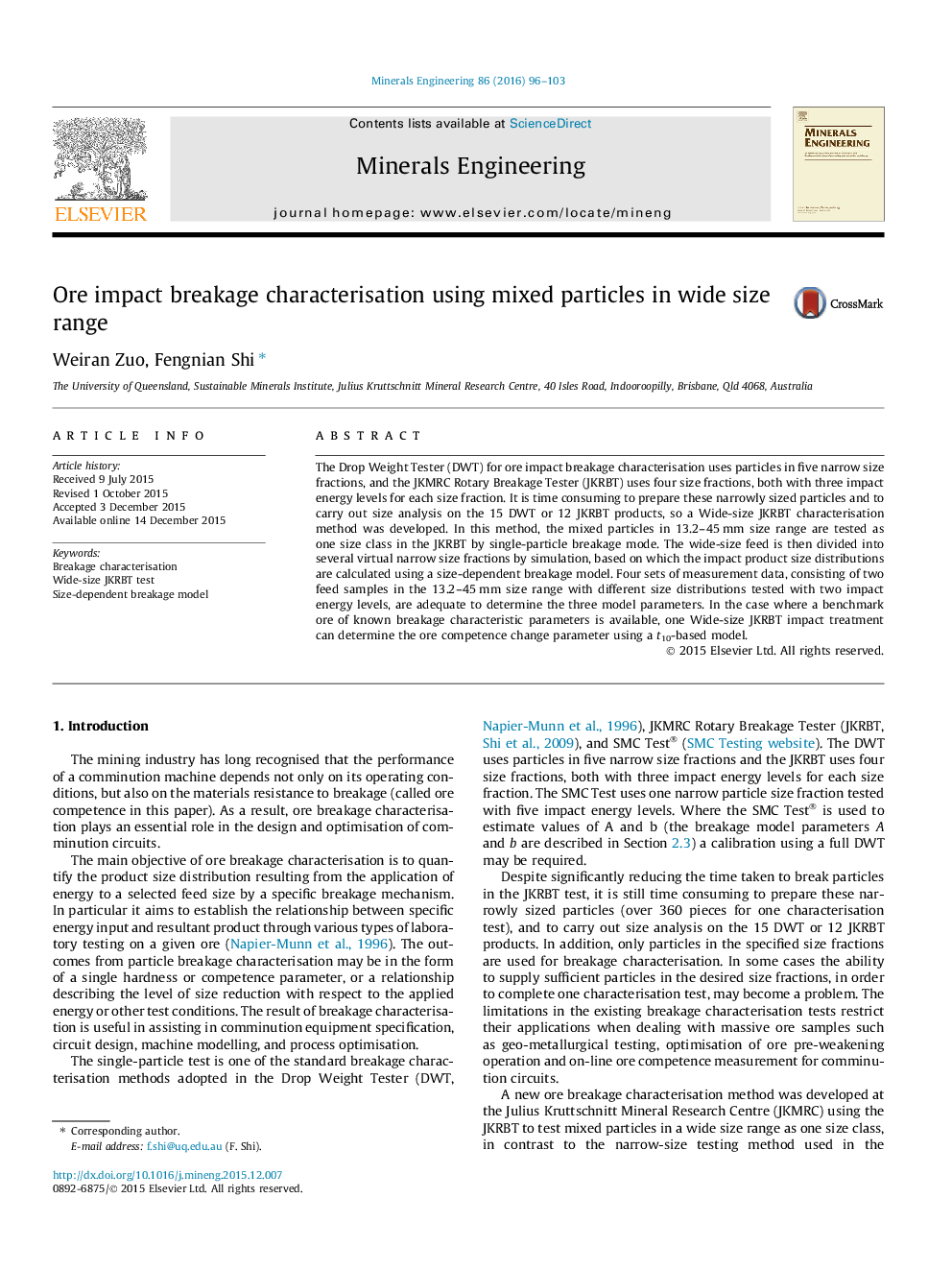| Article ID | Journal | Published Year | Pages | File Type |
|---|---|---|---|---|
| 232813 | Minerals Engineering | 2016 | 8 Pages |
•A new testing method for ore impact breakage characterisation was developed.•Testing mixed particles in wide size range rather than narrowly sized particles.•Two data reduction models are introduced to determine ore breakage characteristics.•It can be employed for rapid measurement of ore competence changes.
The Drop Weight Tester (DWT) for ore impact breakage characterisation uses particles in five narrow size fractions, and the JKMRC Rotary Breakage Tester (JKRBT) uses four size fractions, both with three impact energy levels for each size fraction. It is time consuming to prepare these narrowly sized particles and to carry out size analysis on the 15 DWT or 12 JKRBT products, so a Wide-size JKRBT characterisation method was developed. In this method, the mixed particles in 13.2–45 mm size range are tested as one size class in the JKRBT by single-particle breakage mode. The wide-size feed is then divided into several virtual narrow size fractions by simulation, based on which the impact product size distributions are calculated using a size-dependent breakage model. Four sets of measurement data, consisting of two feed samples in the 13.2–45 mm size range with different size distributions tested with two impact energy levels, are adequate to determine the three model parameters. In the case where a benchmark ore of known breakage characteristic parameters is available, one Wide-size JKRBT impact treatment can determine the ore competence change parameter using a t10-based model.
